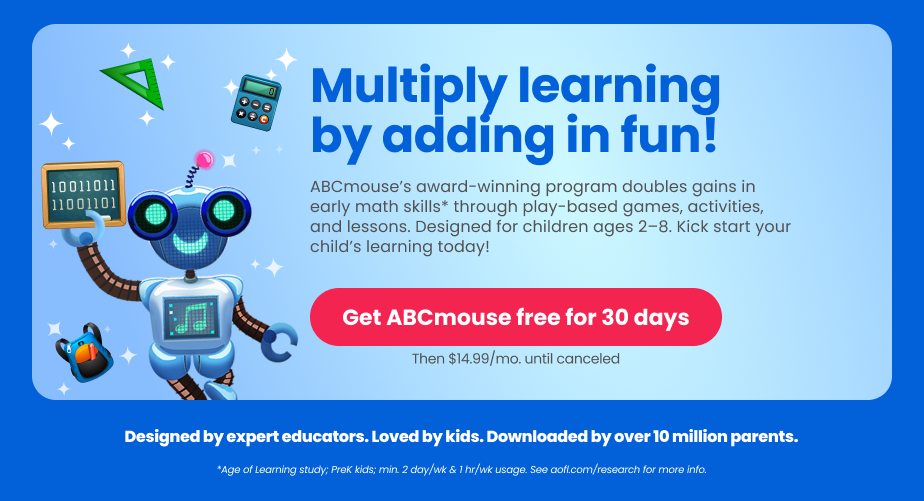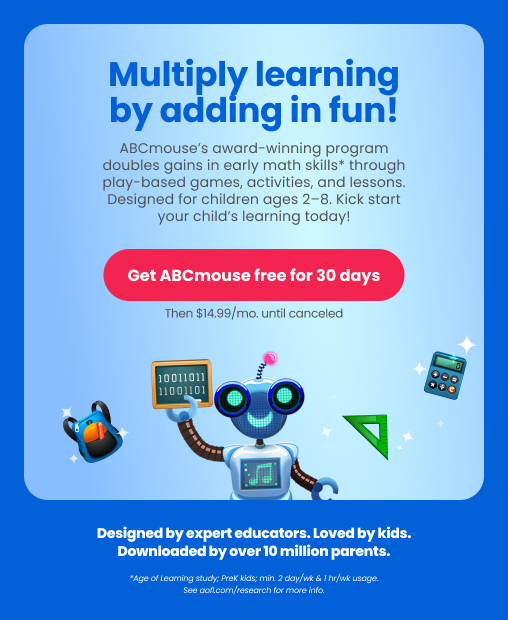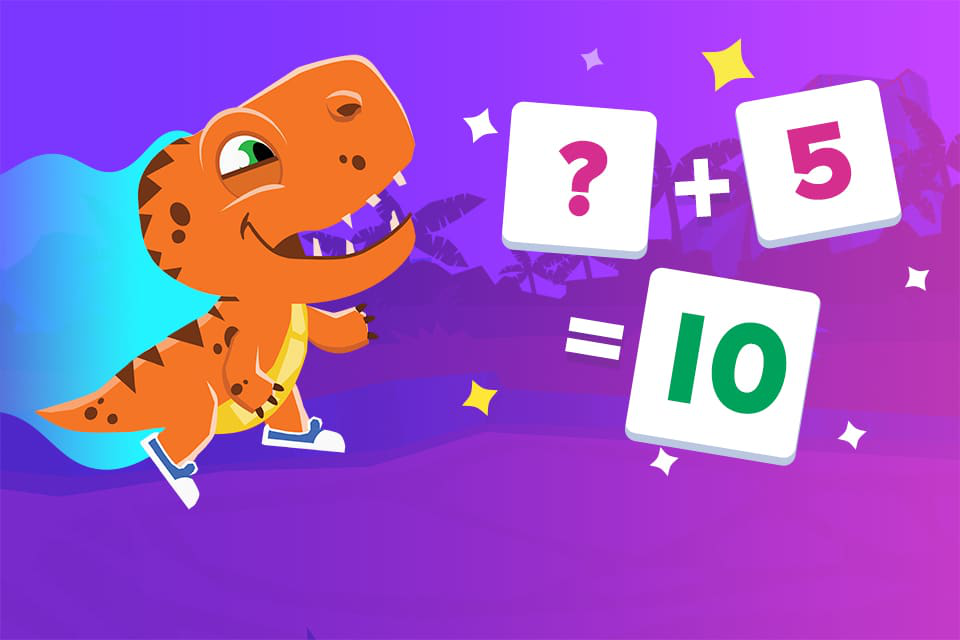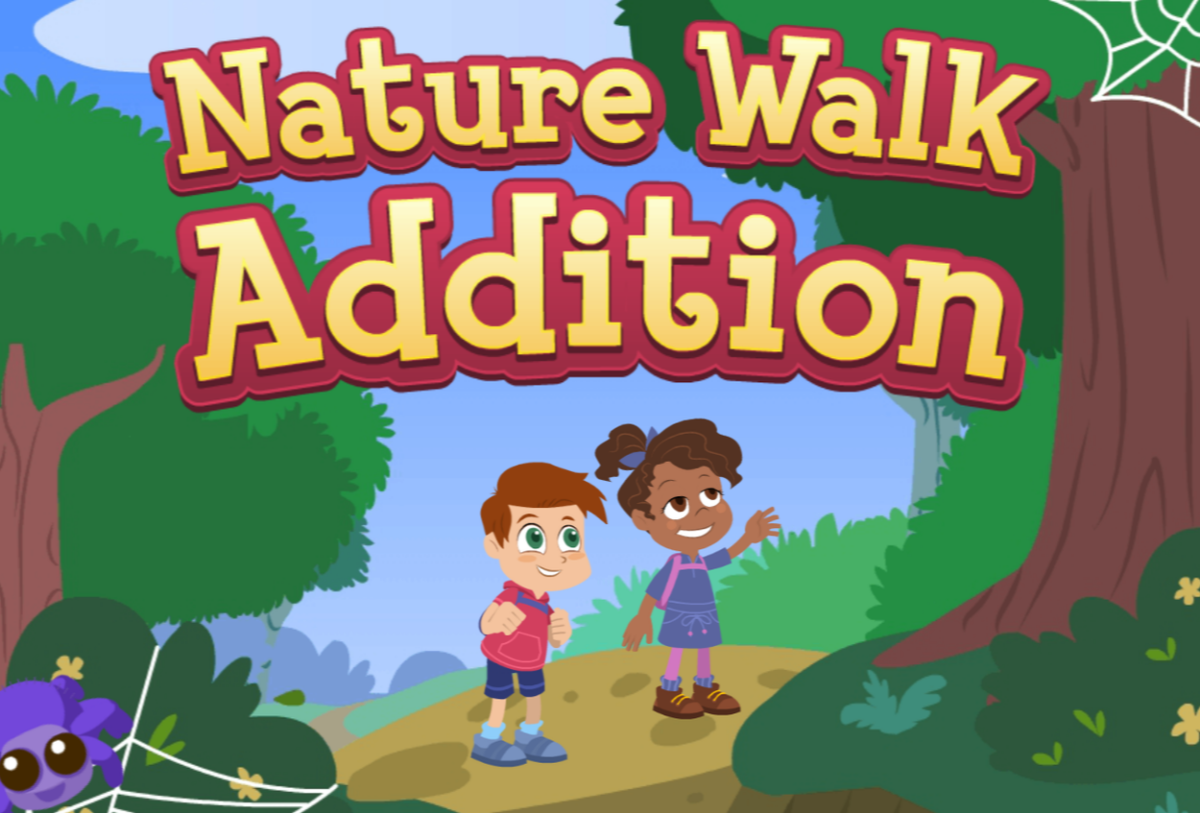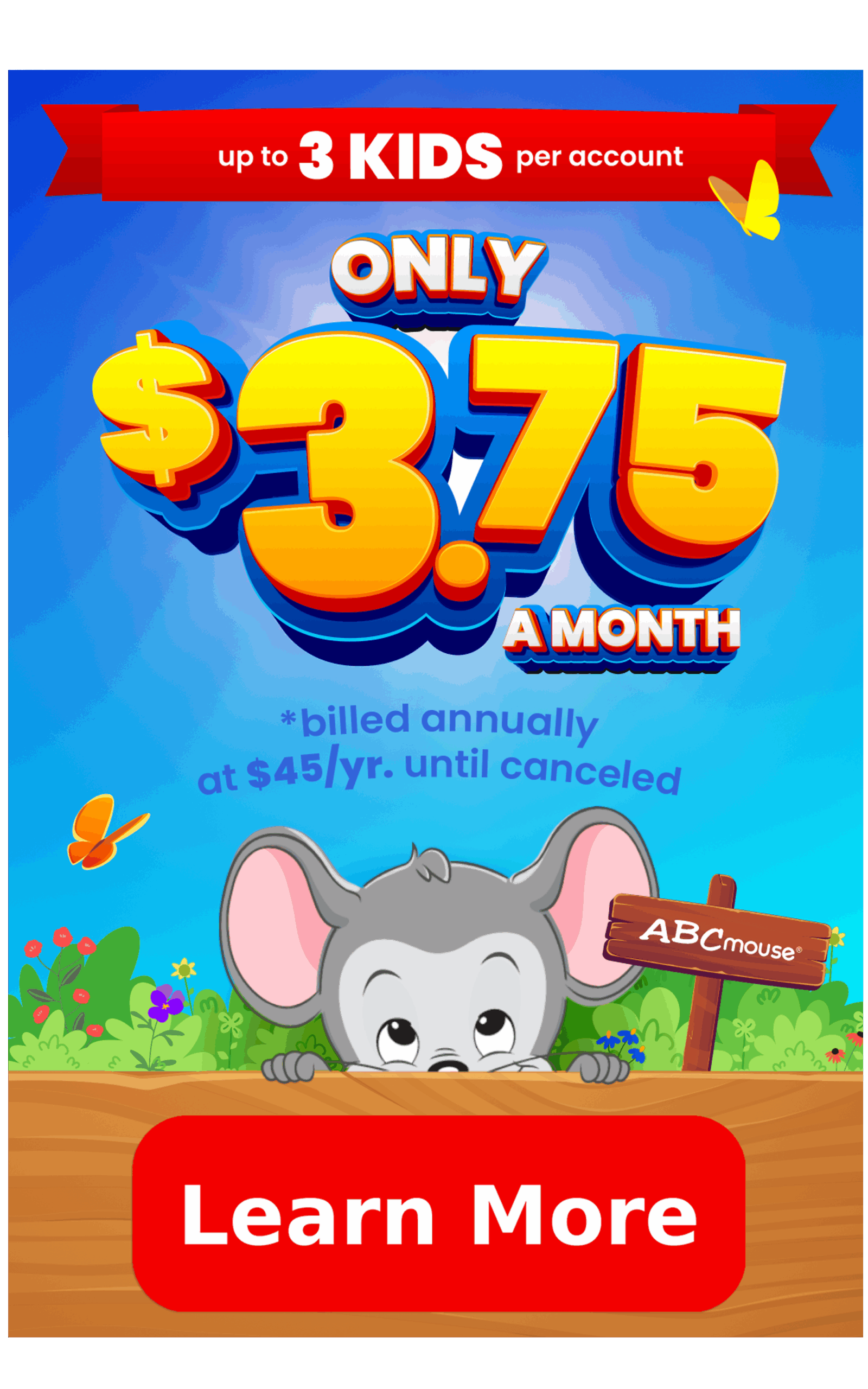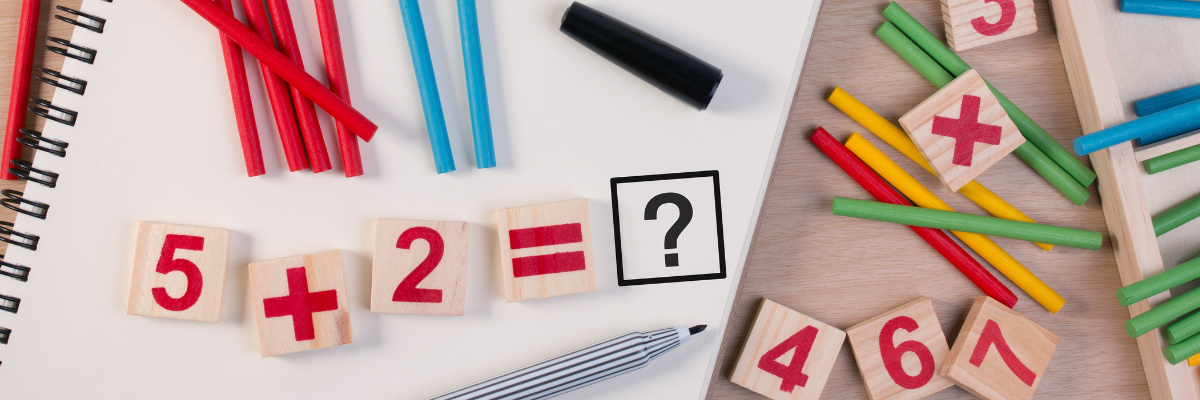
How to Teach Addition So Kids Really Understand It
Get strategies for teaching your child addition and a few tips and tricks to help make learning more effective and enjoyable.
Around the time they reach first grade, kids begin working on arithmetic concepts like addition and subtraction. Students need a strong foundation in these skills before they can move on to more advanced math, so it’s important to spend time making sure children truly understand them. Here’s what you need to know about teaching addition to kids.
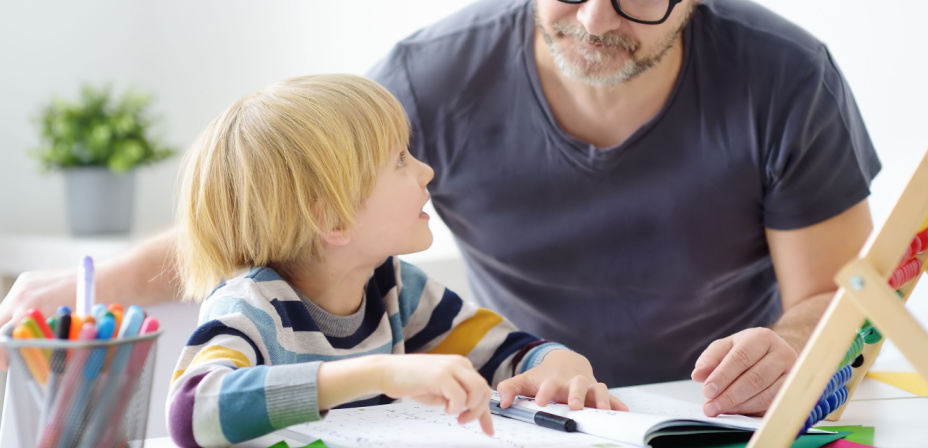
Preparing to Teach Addition Skills
Before kids can learn to add, they’ll need foundational counting skills. They must develop what’s known as number sense, including the following concepts.
- Ordinality: When we teach kids to count, we’re basically teaching them the correct order of numbers, known as ordinality. Younger students learn to count to 10, while older students work toward 100 and beyond. Remember to practice counting backward too.
Try this: When you go for a walk, practice counting your steps out loud. For an extra challenge, walk and count backward!
- Less and More: You can introduce the general idea of addition to kids very early on, simply by talking about the concept of “less” and “more.”
Try this: Give your child a few grapes, and take a bigger amount for yourself. Ask who has more grapes, you or your child?
- 1-to-1 Correspondence: As you teach kids to count, be sure to correlate physical amounts of items with the numbers. It’s not enough for kids to just be able to say their numbers in order. They must be able to relate a number to an item being counted, a skill known as “1-to-1 correspondence.”
Try this: Count items out loud together at every opportunity, touching each item as you say the number whenever possible. Emphasize that you only touch each item one time as you count. The last number counted tells how many items there are in all. Consistently ask at the end of each count, “How many do you have in all?”
- Cardinality: This term means students understand a number relates directly to a group of items; for example, the numeral 7 and the word seven represents a group of 7 bananas.
Try this:
- Lay out groups of various items. Give your child number cards or magnets, and ask them to match the correct number with each group.
- Work on recognizing one and two more is important for development of number relationships. (For example, knowing one and two more than 7 helps a child know that 8 is one more than 7 and also one less than 9.)
- Use the benchmark number 5. It’s helpful for a student to think of 7, for example, as a combination of 5 and 2 more. Hands/fingers are great tools for building familiarity with 5 as a benchmark!
- Introduce part-part-whole relationships. This can mean starting with a “whole” – a set of 5 items, for example, breaking it apart into two smaller parts (such as 4 and 1), and recognizing out loud that the parts 4 and 1 make 5 in all.
ABCmouse doubles early learning gains in reading and math.*
*Age of Learning study; PreK kids; min. 2 day/wk & 1 hr/wk usage. See aofl.com/research for more info.
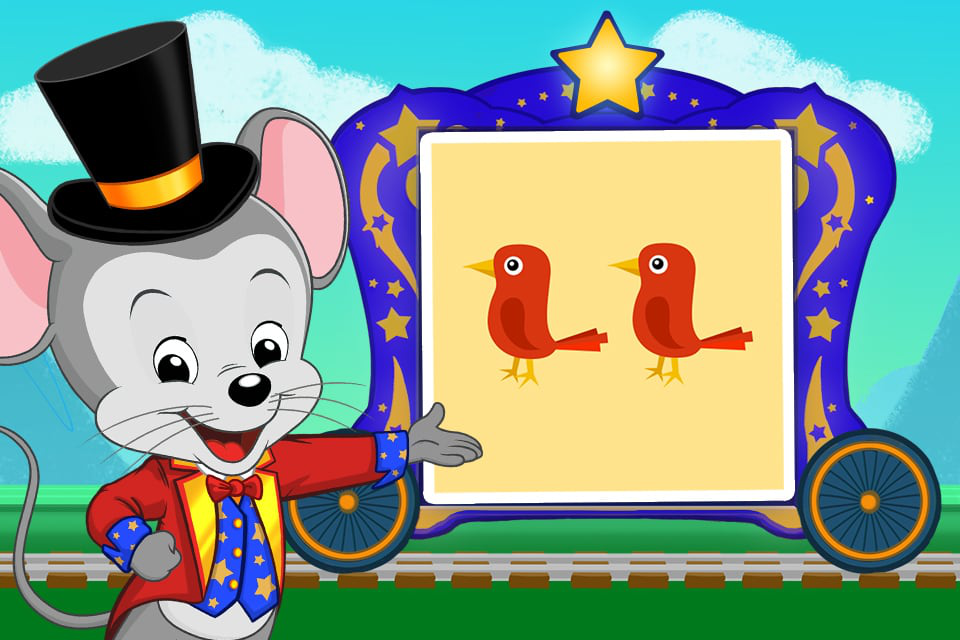
6 Strategies for Teaching and Learning Addition
Once they’ve developed a good grasp of number sense, kids are ready to see addition in action. Start with smaller numbers, like addition within a sum of five, then ten. Then, build their skills until they know all their basic addition facts. Here are some strategies and tips for teaching addition to your child.
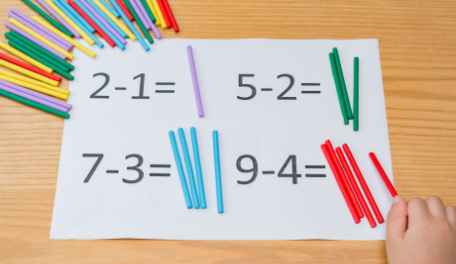
1. Writing Equations
Learning to add means writing out equations like “3 + 5 = 8,” so you’ll need to teach them those symbols and what they mean. They’ll also need to learn words like “addend” and “sum.”
Try this:
- Make cards with addition signs and equals signs on them. It’s also important for young students to learn from the start that the equal sign means “is the same as.” Many tend to believe the sign basically means “the answer is.” Use these cards along with number cards or magnets to build an equation. Exposure to equations like “8 = 3 + 5” is beneficial, too. Many students have the misconception that equations can only be built in the more often seen structure, [addend] + [addend] = [sum].
- Build equations in tandem with showing a visual or adding actual items. For example, use some beads or other household objects and say to your child “You had 6 beads, and now I’ve given you 3 more beads. How many beads do you have in all?”
2. Counting On
Basically, this means kids can start counting upward from any number, without needing to start at number 1.
Try this:
- Try this: Lay out three items and ask your child to count them. Then, add three more items to the display. Starting at 3, ask your child to “count on” to find the total number of items.
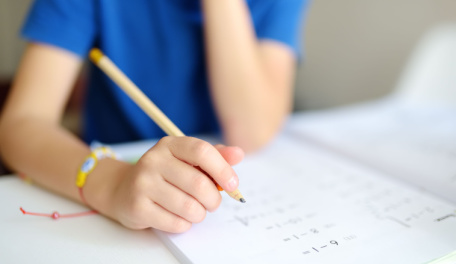
3. Zero Facts
This seems like an obvious concept to adults, but kids need to learn that when you add zero to a number the number does not change. (Remember to include zero as a concept when you’re teaching kids to count.)
Try this: Introduce flashcards using zero facts. Kids usually master these pretty quickly, and this will help them become familiar with the concept of flashcards too.
4. Making 10
Another simple concept teachers often use is the idea of “making ten.” This helps kids master all their lower addition facts. Plus, it prepares them for the idea of regrouping when they begin adding two-digit and larger numbers.
Try this: Give kids 10 small items. Have them lay out 1 item, then add the other nine, counting on until they reach 10. Repeat with 2, 3, 4, etc. As they develop their skills, ask them to “make ten” without needing to count on.
5. Turn Around Facts
One nice thing about addition is that it doesn’t matter what order the addends appear in; the sum is always the same. In other words, 4 + 5 and 5 + 4 both equal 9. One way to support this understanding is to refer to addends as “parts” and the sum as the “whole.” The parts added together will always make the whole!
Try this: Give your child three items, while you hold five items. Ask them for the total number of items you each have. Then, trade items, so they have five and you have three. Ask them for the total again. Note that it’s the same sum, no matter what order you add them up in.
6. Tally Marks
Tally marks (a series of four vertical slashes with a diagonal fifth slash to represent each grouping of five) are a fun way to practice counting on and basic addition.
Try this: Take turns tossing balls into a basket. For each one that goes in, award the player a tally mark. Compete to be the first to reach 5, 10, or another target number.
Math Manipulatives and Tools for Teaching Addition
Hands-on tools are especially helpful for students learning addition. Here are some classroom and home favorites:
- 10 Frame
- Number Line
- Rekenrek
- Double-sided Counters
- Flashcards
- Dominoes
- Dice
- Playing Cards/Uno Cards
- Base 10 Blocks
- Math Balance
Addition Games and Activities
Make math more fun for kids by playing games or doing physical, hands-on activities. This engages all parts of the brain and helps the learning stick! You can see our full list of 15 awesome addition activities here, or try these activities below.
ABCmouse Educational Math Games
Make screen time more meaningful with apps that encourage math and addition skills in kids. ABCmouse offers lots of games perfect for learning addition, in addition to our complete math curriculum. Learn more about how ABCmouse can help teach math to kids here, and try our free-to-play addition games here.
Building Bricks Addition
There are multiple ways to practice addition using building bricks. You can simply pull two handfuls of bricks, count them up, and add them together. Or, pull two bricks and count the number of studs (raised dots) on each. Add those dots together to find the sum. Be sure to write out your equations as you go.
Number Line Jump
Write out a life-sized number line on the sidewalk with chalk. Pull a flashcard and have your child stand on the first number of the equation. Then, have them “jump on” as they count up the number line to find the sum of the equation.
Interactive Worksheets
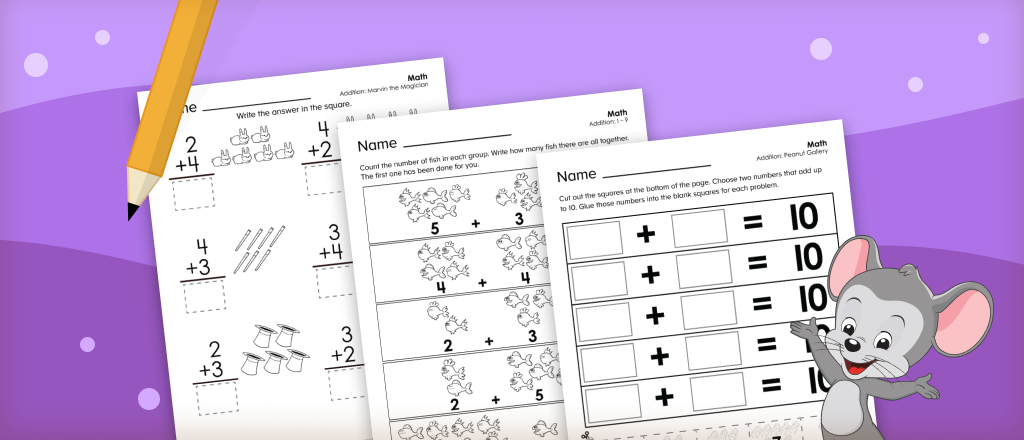
Addition can be a fun and engaging activity when presented as interactive worksheets. These worksheets from ABCmouse.com provide ample practice opportunities and allow kids to apply what they’ve learned in different contexts, which enhances their understanding and mastery of addition.
Number War
Use only the number cards from a deck (Uno number cards work well for this one too). Each player takes a stack and turns it face down. At the same time, each player flips their top card. The person whose number is bigger keeps both cards. If each player flips the same number, they each flip another card and add them up to find the sum. The bigger sum wins all the cards. (Still a tie? Continue flipping and adding until someone wins!)
Addition Bingo
Use playing boards with numbers in the squares that represent the sums of the flashcards you’ll be using. As you pull each flashcard, write out the equation and ask players to calculate the answer. Then, they place a chip on their board if they have the corresponding number. Play until someone has a row across, down, or diagonally and shouts “Bingo!”
Look for Addition Stories
As you’re out and about with your child, look for addition equations in the real world. For example, if you see 2 children at the park playing basketball and 2 children playing catch, how many children in all are playing?
Advanced Addition Skills for Kids
Although curriculum programs vary, children are generally expected to master their basic addition facts by the end of first grade. Children also begin to work on more advanced skills in first grade, such as equations with multiple addends (e.g. “5 + 8 + 9 = 22”) and multi-digit addition (e.g. “42 + 16 = 58”). You can use many of the same strategies shown above for these advanced addition problems.

The most complex skill in basic addition is regrouping in multi-digit addition. This requires understanding other number concepts like place value. Try using base 10 blocks for hands-on demonstrations, and know that this skill is one it takes most children lots of practice to master. Learn more about teaching regrouping here.
How to Help Kids Who Struggle With Addition
For some kids, learning addition comes easily, but others struggle to understand the concept and master their math facts. Some research suggests that these challenges can often be traced back to underlying cognitive aspects, such as working memory and counting knowledge. Research by David C. Geary and colleagues provides insight into this: “In all grades, the children with mathematical disabilities (MD) showed a working memory deficit, and in first grade, these children used less sophisticated strategies and committed more errors while solving simple and complex addition problems.” This highlights the need for educators and parents to adopt strategies that address these fundamental cognitive challenges.
Another more straightforward way to help children with math is to work on addition in tandem with subtraction. Doing both at the same time helps to reinforce the relationship between the two and develop flexible thinking as a mathematician. Here are some ways parents can help:
Focus on Fundamentals: Ensure your child has strong number sense skills. If they don’t understand concepts like cardinality, 1-to-1 correspondence, counting on, or “less and more,” they won’t be able to build on those skills to master addition. Return to the basics until your child is ready to try again.
Use Hands-on Practice: Many children do best when they get to move and handle items physically. Build a collection of manipulatives and math toys that your child enjoys, or check out these digital resources, and use them often.
Play Board Games: Many board games naturally involve counting and addition. Pull out old favorites like Monopoly©, cribbage, and Yahtzee© to encourage addition practice that’s fun too.
Try Math Practice Apps: Make screen time more meaningful with apps that encourage math and addition skills in kids. ABCmouse offers lots of games perfect for learning addition, along with our complete math curriculum.
Additional Resources
ABCmouse offers engaging programs and games designed by early education experts to help expand your child’s learning. Here are a few examples:
Important Math Concepts for First Graders
Learn some key areas to focus on with your child as they explore the world of math as a first grader.
Browse →
Use Cards to Teach Kindergarteners Math
See how everyday playing cards can be a great resource to help your child practice key math concepts.
Browse →
Hands-on Math Activities for Your Second Grader
Practicing math skills gets even more fun with these engaging math activities.
Browse →
ABCmouse’s expert advice review process:
Our team of ABCmouse Curriculum Experts, made up of talented professionals in early childhood education and development, take a close look at educational content and learning claims. They put in the effort to make sure our information is accurate and current. We have a certified educator or another respected authority review the content, matching their expertise with the topic at hand. They’ll make sure the content is thorough and follows the latest research and educational guidelines. If they think we can make things even better, they’ll chat with our editorial team, and we’ll make those improvements right away. Only after a reviewer gives their thumbs-up does a piece of content get the official stamp of approval in the byline.


